In the current competitive business environment, brand loyalty is what makes all the difference between a lone buyer and a lifetime customer. As a CMO or marketing leader, you already understand that it is much more costly to gain a new consumer than to retain an existing one. This is why not merely a good idea, but a strategic necessity, building brand loyalty leads to increased customer retention, better engagement, and business growth that can be measured.
Section 1: Understanding Brand Loyalty
1.1 What Is Brand Loyalty?
Brand loyalty is the affirmative attitude that a customer has towards a brand that makes him/her desire to repeatedly purchase that brand as opposed to its competitor. It is not just a habit, it is a promise of trust and satisfaction. It does not mean a simple brand extension, which occurs when a company applies its built-in brand name to a new category of product. Brand loyalty definition is the connection that exists between the customer and the brand itself, rather than the products that it offers.
1.2 Why Brand Loyalty Matters
The significance of brand loyalty is obvious considering the figures. The advantages of loyal customers include spending more in the long-run, possessing a high degree of lifetime value, and being more disposed to refer your brand to friends and relatives. This causes them to advocate strongly on behalf of your business. In the case of CMOs, brand loyalty in marketing would imply establishing a basis of loyal customers who will directly contribute to the bottom line and will serve as a free marketing channel.
1.3 Types of Brand Loyalty
Brand loyalty is of two major types, which are of considerable significance in understanding how customers relate to brands:
1. Behavioral Loyalty
It is identified by customer behavior, including repeat purchases and buying patterns. Customers who show behavioral loyalty continue to patronize a brand usually because of convenience, habit, or price incentive, not due to a strong emotional attachment. As an example, a customer may purchase the same brand of detergent because it is readily available or cheap. Although this is good, this may be less permanent as it can switch to a competitor who is more convenient or cheaper.
2. Attitudinal Loyalty
This type indicates the feeling and emotional involvement of a customer with a brand. Attitudinal loyalty is when the customers are strongly biased towards the brand and it is not due to practical necessity. They would select the brand despite having a better deal on offer by a competitor, based on trust, identification or emotional attachment. This is said to be the ultimate brand loyalty because it produces long-term customer loyalty and advocacy.
Based on this background, there are numerous particular forms of brand loyalty that fall into these two general categories. For instance:
- Hard-Core Brand Loyalty is a high level of attitudinal loyalty where customers only use a certain brand.
- Habitual Brand Loyalty is more to do with habitual purchases with less emotional attachment.
- Emotional Brand Loyalty is clearly part of the attitudinal loyalty because it focuses on feelings and identity.
- Price-Driven Loyalty is a kind of behavioral loyalty that is motivated mostly by incentives.
This knowledge of the difference between behavioral and attitudinal loyalty assists brands to specifically design their strategy to not only promote repeat purchase behavior and even develop deep emotional bonds that lead to long-lasting, meaningful loyalty over time
Section 2: Real-World Examples & Insights
Numerous corporations have developed effective brand loyalty programs, which extend beyond the transaction to develop long-term customer relationships.
In the B2C space:
- The best example is Starbucks. Their loyalty application provides a smooth customer experience with customized rewards that will encourage customers to visit more and spend more.
- Airlines such as Delta and American Airlines use the loyalty programs that include tiered points and status levels encouraging repeat travel and customer retention.
- Banking brands gauge their loyalty by tenure and depth of product use, rewarding those customers who go well beyond simple accounts into a wide range of financial services.
In the B2B space, brand loyalty is often even more critical given the higher stakes and longer sales cycles:
- HubSpot is an example of B2B loyalty where it adds value to their offerings by offering free education content, certifications and a strong community around inbound marketing. This builds trust and loyalty, and customers would be less inclined to shift to competitors like Salesforce. Their blog and webinars and HubSpot Academy are central drivers of loyalty.
- FedEx creates loyalty through fulfilling a key B2B requirement by ensuring reliable, on-time shipping. In business clients, reliability has a direct impact on the operations of the client themselves and customer satisfaction, which makes a strong trust relationship and repeat business.
2.2 Lessons from Top Brands
Brands that have been successful in both B2C and B2B business take customer experience as a relationship that should be continually nurtured rather than a one-off promotional event. They do not want to see loyalty programs that are cumbersome or contain irrelevant rewards. Instead, they offer valuable utility, ease customer experiences, and build trust, which will lead to sustainable brand loyalty.
Through such a strategy, loyalty is reinforced beyond a transactional reward it becomes a pillar of brand value and customer retention.
Section 3: Strategies to Build Brand Loyalty
3.1 Core Strategies
This is what you need to have a clear strategy to build brand loyalty.
- Personalization and Segmentation: Personalize communications and offers using customer data. A custom experience will help the customers feel recognized and heard. In the case of a B2B business, it might be a whitepaper on any area of interest that a particular client has expressed.
- Customer Experience Optimization: Ensure every interaction is seamless and pleasant, whether it is a customer visiting your site the first time or after the sales process.
- Designing Rewards and Loyalty Programs: Design loyalty programs with tangible rewards. These are points based systems, tiered rewards or exclusive access to new products. The following are some of the best brand loyalty strategies.
3.2 Marketing and Design
Visual design has a very significant role in loyalty. What is the power of visual design and brand loyalty? A coherent, attractive, and memorable visual presence forms a bond of trust and emotion. Consider how Apple has used clean design or how Coca-Cola has created red and white as its standard colors making them recognizable instantly. Besides visuals, compelling storytelling and messaging can establish an emotional connection with customers and make them feel as if they belong to something bigger than a brand.
3.3 Measuring Loyalty
You can’t manage what you don’t measure. Key metrics include:
- Net Promoter Score (NPS): Measures customer satisfaction and willingness to recommend.
- Retention Rate: The percentage of customers who continue to buy from you over time.
- Repeat Purchase Rate: The percentage of customers who have made more than one purchase.
Using this data helps you understand what’s working and what isn’t, so you can continuously refine your campaigns.
Section 4: Advanced Considerations for CMOs
With the current fast-paced digital world, a number of new platforms and technologies are transforming the concept of brand loyalties in consumer behavior. To Chief Marketing Officers (CMOs), it is about redefining the classical brand loyalty practices and adopting new ways to reach and retain customers most appropriately.
Digital-First Loyalty
Modern consumers spend significant time on digital devices, making it imperative for brands to prioritize digital channels in their loyalty strategies. CMOs should focus on:
- Mobile Apps: Coding mobile-friendly, customer-focused applications that are intuitive and designed to provide simple access to rewards, and customized content. As an example, the concepts of geolocation-based offers, mobile payments, and real-time notifications are some of the features that are integrated in successful loyalty applications to maintain user engagement and make them want to come back.
- Social Media Engagement: Creating proactive social media communities where customers can share experiences, access unique content and get involved in brand conversations. Social media enables the brands to create a sense of belonging and brand advocacy. CMOs must take a strategic approach to using platforms such as Instagram, TikTok, and LinkedIn based on their target audience, and encourage loyalty by engaging with interactive content, influencer collaborations, and user-generated content campaigns.
Online Communities: Establishing a specific area like a branded forum, Facebook Group, or Slack channel where consumers and brand fans can socialize, share their ideas, and engage with the brand on a more human level. These communities cultivate trust and long-term loyalty by making their customers feel heard and appreciated.
Emerging Trends
To stay ahead, CMOs must also explore and integrate emerging technologies that enhance personalization and storytelling, key drivers of loyalty in the digital age:
- Artificial Intelligence (AI) and Machine Learning: AI-based solutions allow hyper-personalization, utilizing customer information to make personalized product recommendations, send personal messages, and make anticipatory offers that are likely to appeal to their preferences and behavior. This degree of personalization creates a better customer experience and helps establish confidence in the brand to address their individual requirements.
- Video Content For Storytelling: Video is now a primary mode of interaction, and video content provides brands with an effective means of conveying authentic messages, proving product value, and emotionally connecting with viewers. CMOs ought to use videos on social media, websites, and even interactive advertisements to help them connect with audiences through compelling, relatable stories that further the brand values and strengthen their loyalty.
- AR and VR: Immersive technologies are becoming a way to provide engaging and experiential brand interactions; virtual try-ons, immersive product demos or branded virtual spaces are some examples of how brands can stand out and build long-term emotional connections with customers.
- Voice and Conversational Commerce: With voice-activated tech becoming more commonplace, brands need to optimize their interactions with voice search and conversational AI assistants to provide frictionless, personalized experiences that make customer journeys much easier and, therefore, more likely to result in a repeat customer.
When CMOs place a digital-first mindset at the forefront and use these emerging trends to their advantage, they can turn brand loyalty into a truly transformational relationship rather than a transactional one that is purely based on emotions. Such continuous changes demand a customer-focused mindset, the ability to adapt to emerging technologies, and a strategic focus on the meaningful experience at every digital point of contact. This will eventually empower brands to develop more robust and stronger loyalty in a highly competitive and complex market.
Conclusion
Creating enduring brand loyalty is a long game and not a short one. With a clear definition of what brand loyalty is, successful approaches such as personalization and excellent design, and continual measurement of the results, you can build a loyal customer base. The ROI of CMOs is quite obvious: more customer interaction, improved retention, and a strong force of brand evangelists.
Start creating loyalty programs that will deliver quantifiable outcomes today.
Conclusion: Build Lasting Brand Loyalty with HT Brand Studio
Creating brand loyalty is not a mad dash. By prioritizing a robust grasp of what brand loyalty entails, by enacting powerful strategies such as personalization and attractive design, and by tracking the results continuously, CMOs can develop a base of loyal customers. The ROI is also obvious: increased engagement with customers, greater customer retention, and a strong network of brand supporters. Start developing loyalty programs that generate quantifiable results today.
HT Brand Studio: Your Partner in Brand Storytelling
True brand loyalty is built on a compelling narrative, and HT Brand Studio specializes in bringing those narratives to life. As the content and storytelling arm of HT Media Group, they create bespoke content that transforms your brand message into engaging, high-impact stories.
Their Services Include:
- Branded Content: Good quality articles, videos, infographics which explain your brand.
- Custom Campaigns: Custom campaigns that are immersive and format-flexible and that are aligned with your business objectives, whether it is lead generation or category launches.
- Performance-oriented Narratives: Capitalizing on the wide-ranging digital presence of HT Media to make sure your content drives actual performance in terms of engagement and click-throughs.
HT Brand Studio collaborates with brand teams, agencies, and CXOs to create content that resonates, breaks through the noise, and connects deeply with audiences—turning creative storytelling into real business outcomes.
Frequently Asked Questions
What is brand loyalty and why is it important?
Brand loyalty can be described as the preference of a customer to use a certain brand, rather than the other brands. It is significant since loyal clients will encourage repeat buying, increased lifetime value, and become brand advocates, increasing the effectiveness of marketing activity. To CMOs, brand loyalty is one of the principle drivers of long-term business growth.
What are the different types of brand loyalty?
Brand loyalty can be of two types: behavioral loyalty and attitudinal loyalty. Behavioral loyalty is premised on recurrent purchases, whereas attitudinal loyalty is an emotional attachment to a brand. The most successful customer loyalty programs include both of these to generate a lasting engagement with the customers and a stronger relationship with them.
How can CMOs build brand loyalty?
CMOs can foster brand loyalty by creating personalized customer experiences, providing relevant rewards and loyalty programs, maintaining uniform brand messaging and design and connecting with audiences through compelling narrative. Maintaining a steady trajectory of measuring and optimizing against these strategies using key metrics indicates that loyalty efforts are driving actual business outcomes.
How is brand loyalty measured?
Brand loyalty is normally quantified using indicators like repeat buy rate, customer retention rate, Net Promoter Score (NPS) and customer lifetime value (CLV). These indicators give marketing leaders the marketing insights they need to take action in ensuring that their brand is generating loyal relationships and where they need to improve.
What role does visual design and storytelling play in brand loyalty?
Graphical design and story-telling play an essential role in enhancing emotional associations with customers. Coherent branding, attractive design and thought-provoking stories leave a lasting impression, generate trust, and long-term loyalty and advocacy. To CMOs, these are the vital instruments in establishing a long-lasting relationship between the brand and the audience.
Ready to take your brand to the next level? Connect with us today to explore how HT Media can amplify your presence across our diverse portfolio of 25+ brands and properties. Let's turn your brand vision into reality!

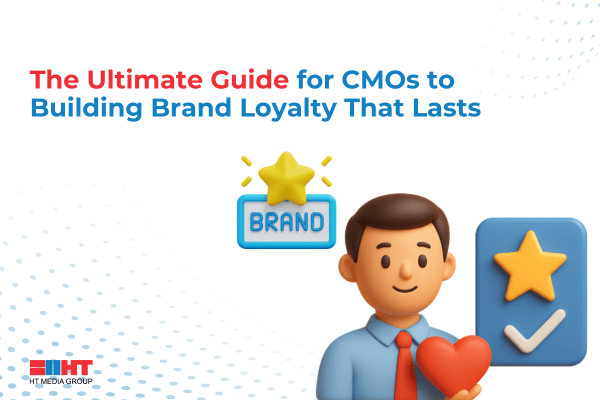


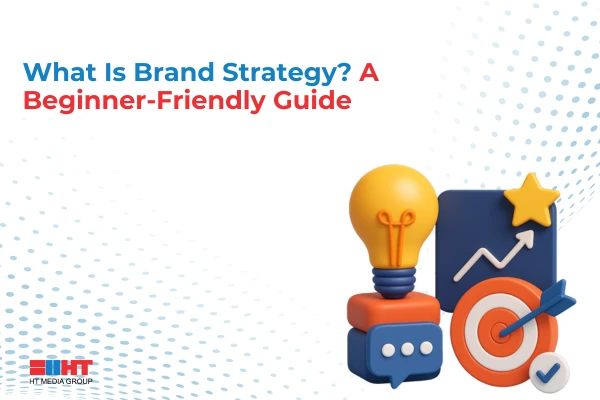
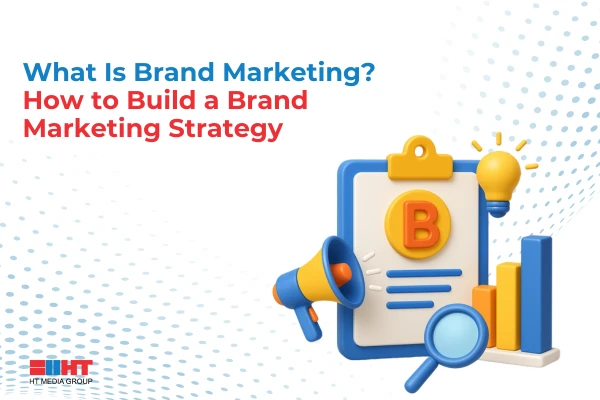
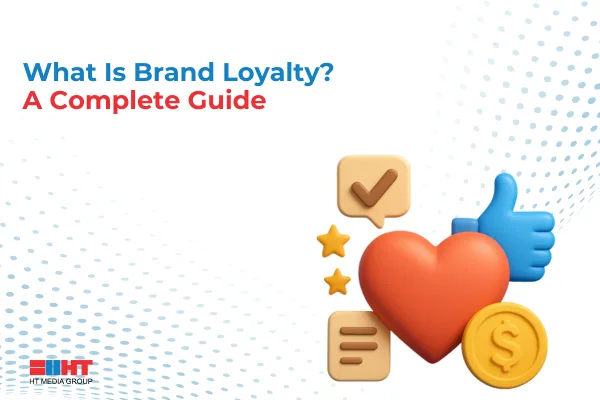
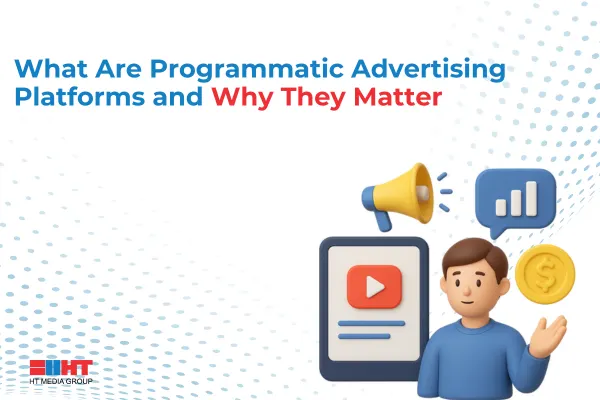
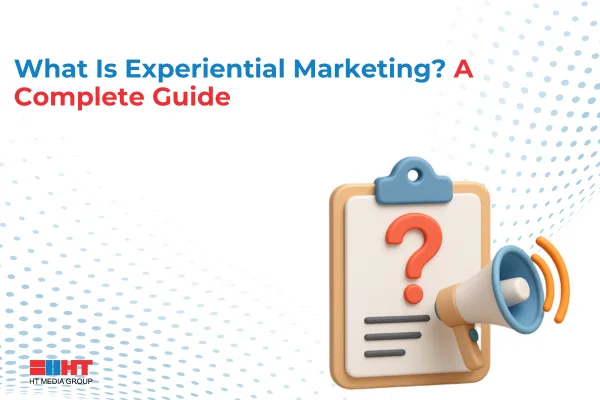
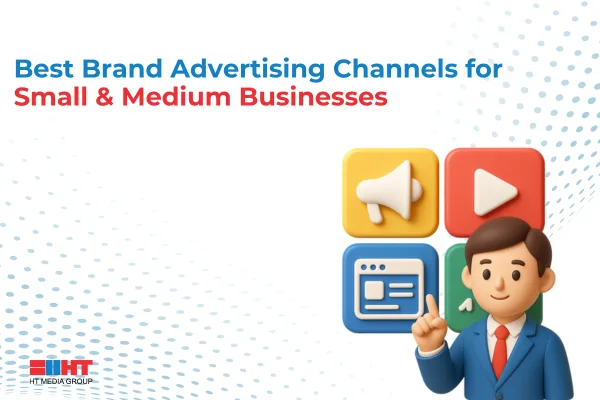
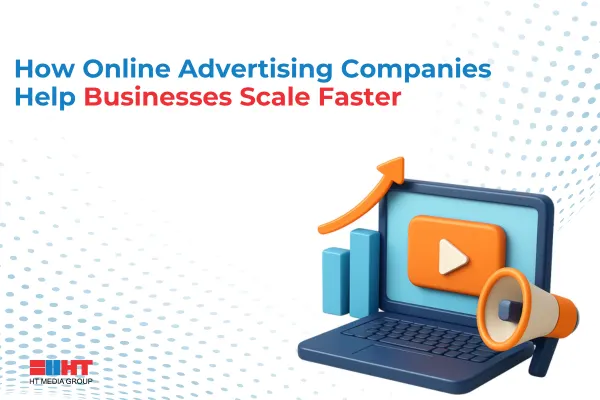
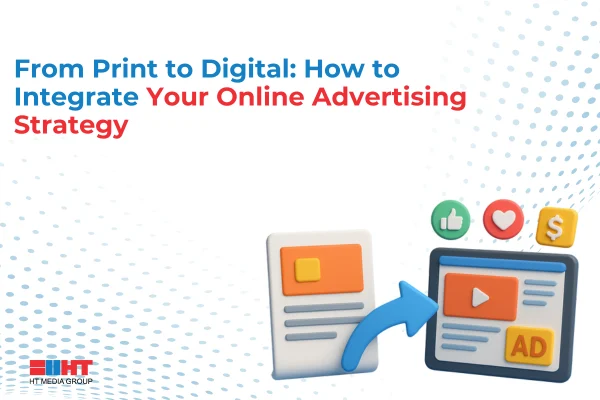
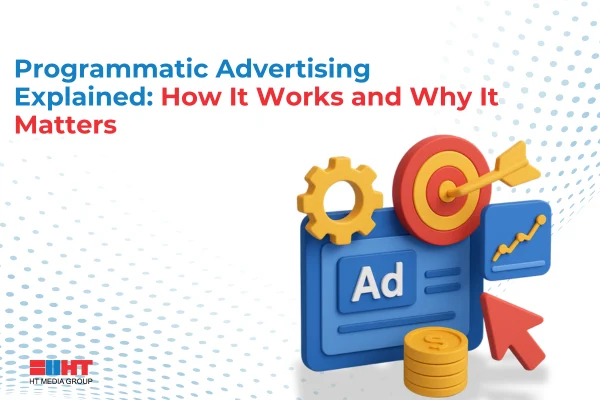
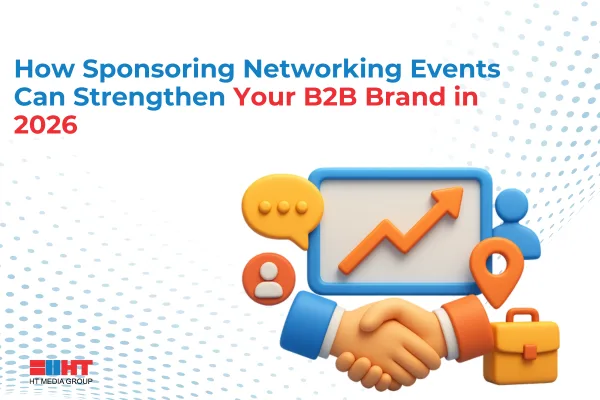

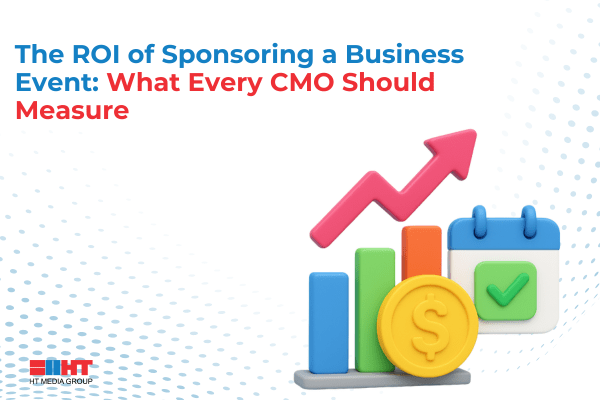

Comment